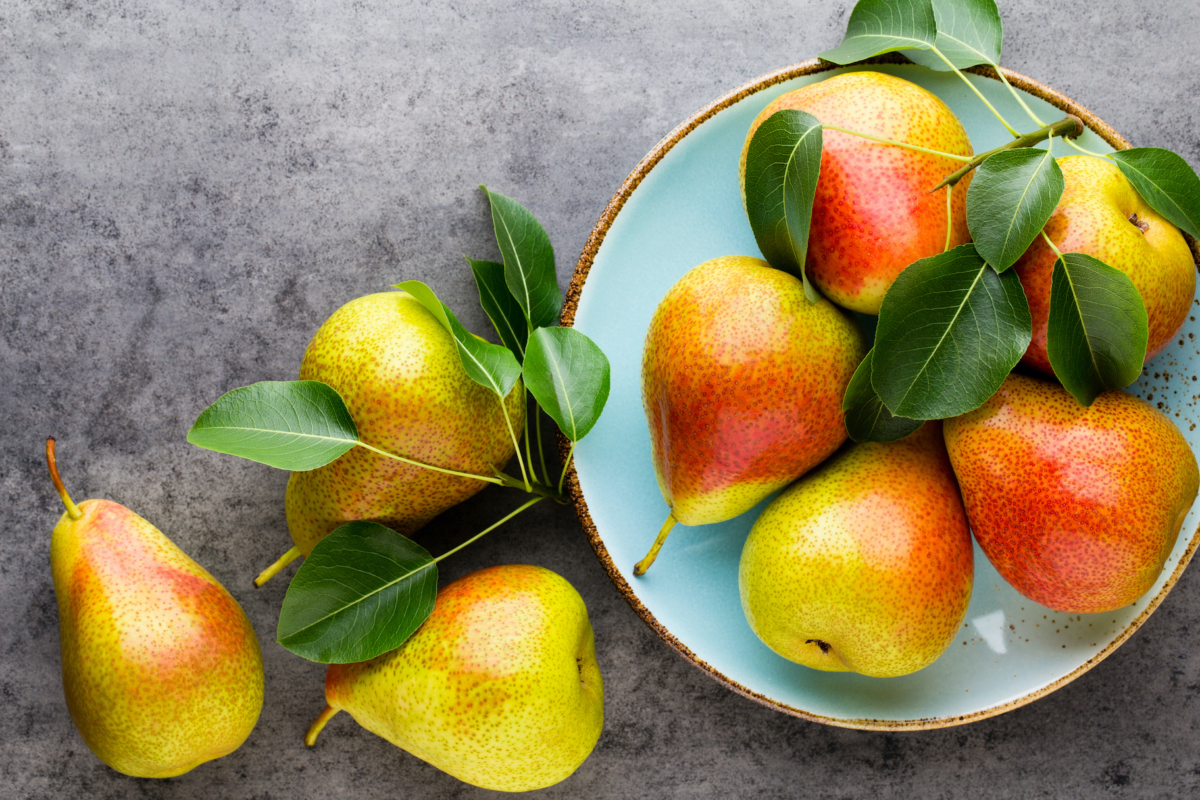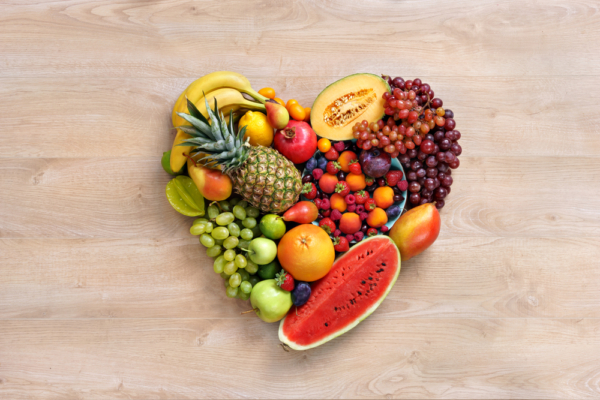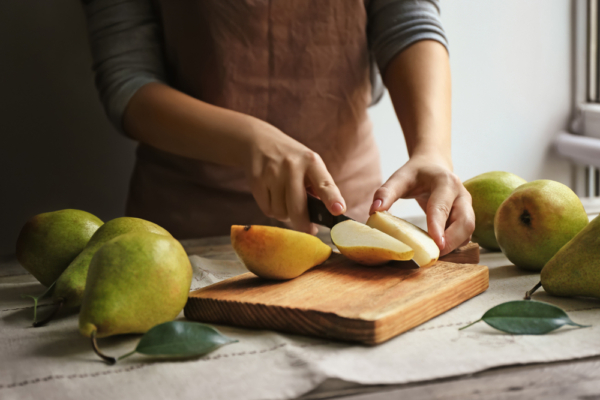


Late summer and mid-autumn are abundantly graced by the presence of pears—an iconic fruit grown and loved worldwide—pears are said to have been sacred to two goddesses in Greek mythology, Hera and Aphrodite.
Originating in the foothills of the Tien Shan mountain range in Western China, pears, or Pyrus communis, are part of the Rosaceae plant family. Because of pear trees’ ability to withstand cold temperatures, they can be harvested year-round, and thus are now grown on nearly every continent on Earth. Because of their deliciousness and abundant medicinal properties, pears have been used as food and medicine by cultures going back thousands of years.
Pears are loaded with nutrition, containing vitamin C, vitamin K, copper, potassium, manganese, folate, and magnesium. They are also low in calories. One medium-sized pear (about 178 grams) has about 100 calories, 0.2 grams of fat, just under a gram of protein, around 27 grams of carbohydrates, and contains about 5.5 grams of fiber.
Pears are high in antioxidants that scavenge free radicals from the body to help prevent oxidative stress that can damage DNA and accelerate aging. They contain phytonutrients including flavonoids that help lower inflammation, which is thought to be the root of some of our most destructive diseases like cancer, diabetes, heart disease, rheumatoid arthritis, and Alzheimer’s. Rich in polyphenols, pears are a good food source for protection against certain cancers, cardiovascular diseases, and neurodegenerative conditions.
With more than 3000 varieties of pears available throughout the world, only 10 are grown in the United States, making the selection a bit easier to choose from. Each variety offers its own unique color, taste, and texture. Many of the phytonutrients and other antioxidants in pears are found in their skins, so eating pears with the skin/peels on is a great way to maximize their health benefits.
The 10 most common types of U.S.-grown pears include:
Pears contain compounds that are thought to be protective against cancer, like anthocyanins and chlorogenic acid. Anthocyanins are water-soluble flavonoids with a range of pharmacological effects, including the prevention of cardiovascular disease, obesity control, and antitumor activity according to a review in the British Journal of Pharmacology.
Pears also contain chlorogenic acid, which can exert anticancer activity by inhibiting the cell cycle, triggering apoptosis (normal cell death), and suppressing the proliferation of cancer cells.
A diet rich in fruits, including pears, has been shown to protect against certain cancers, especially of the lung and stomach.
A meta-analysis looked at the association between fruit and vegetable intake and lung cancer risk and found that an increase in fruit intake was associated with a decreased lung cancer risk in current and former smokers. The authors concluded: “These findings might have considerable public health significance for the prevention of lung cancer through dietary interventions.”
A study, using a pooled analysis of data from 25 studies, looked at the associations between fruit and vegetable consumption and the risk of stomach cancer. They found that gastric cancer risk was lower with a higher intake of fruits.
Some studies suggest that flavonoid-rich fruits like pears may be protective against hormone-related cancers, including breast, ovarian, endometrial, thyroid, prostate, and testicular cancer. A systematic review and meta-analysis found that an increase in flavonoid-rich foods like pears, is associated with a decreased risk of breast, ovarian, and endometrial cancer.
The relationship between fruit and vegetable consumption and the prevalence of breast cancer was established in an analysis that concluded a high intake of fruit was associated with a reduced risk of overall, postmenopausal and estrogen and progesterone-receptor-positive (ER+/PR+) and negative (ER-/PR-) breast cancer.
Pears contain ample fiber—important for lowering cholesterol and other fats—which helps to protect us against cardiovascular disease. Glutathione, an antioxidant found in pears and other fruits can help prevent high blood pressure and stroke. In one study, participants who received glutathione and acetylcholine infusions increased the diameter of their blood vessels as well as blood flow which combined, significantly reduce coronary risk factors.
The pectin in pears also helps to lower cholesterol levels. Pectin is a type of water-soluble fiber found in most plants and in addition to lowering cholesterol, it also helps keep things moving through the bowels smoothly and aids digestion.
The results of a prospective study, published in the American Journal of Epidemiology showed that after following adults over a fifteen-year period, higher consumption of fruits and vegetables was associated with a lower risk of all-cause mortality, cancer, and cardiovascular disease. The study states that their findings support the general health recommendations to include 5–9 servings of fruits and vegetables in our diet daily.
The peel of pears contains an antioxidant called quercetin—a natural pigment present in many fruits and vegetables. Quercetin has many health benefits, especially for the heart, containing flavonoids proven effective against hypertension, inflammation, diabetes, and vascular diseases and protective against free-radical damage that has been linked to many chronic diseases.
Pears naturally have a low glycemic index, meaning that they have a minimal effect on blood sugar. Other low glycemic index foods include green vegetables, most fruits, chickpeas, and lentils.
A cohort study following 9,665 U.S. adults between the ages of 25–74 over 20 years aimed to determine if the consumption of fruits and vegetables was associated with the development of diabetes. The researchers found that eating five or more servings of combined fruits and vegetables daily significantly reduced the risk of developing diabetes.
Pears help to reduce the risk of diabetes due to their high fiber content and anthocyanin-rich skins. Anthocyanins give pear skins their color, particularly the red varieties. Because of their high fiber and low carb content, pears release sugars slowly into the bloodstream, meaning those with diabetes can enjoy this sweet fruit, without the negative consequences on blood sugar levels.
A large study published in the American Journal of Clinical Nutrition that followed more than 200,000 people looked at whether dietary intake of flavonoids like flavonols and anthocyanins were associated with the risk of Type 2 diabetes in U.S. adults. The participants were free of diabetes, cardiovascular disease, and cancer at the beginning of the study. The researchers found that the consumption of anthocyanin-rich foods—particularly blueberries, apples, and pears—was associated with a lower risk of Type 2 diabetes.
Packed with nutrition, pears are loaded with healing benefits that can help protect us from many prevalent diseases. They have also been shown to reduce inflammation, improve digestion, and even help you lose weight. They are also high in vitamin C, which helps boost the immune system, are low in fat and carbohydrates, and are an excellent source of fiber.
There are many different ways to eat pears—poached, roasted, or cooked into various desserts—and of course, you can always eat them fresh off the tree. Just remember that many of the phytonutrients and other antioxidants are in the skin, so wash them well and eat the peels, too.


